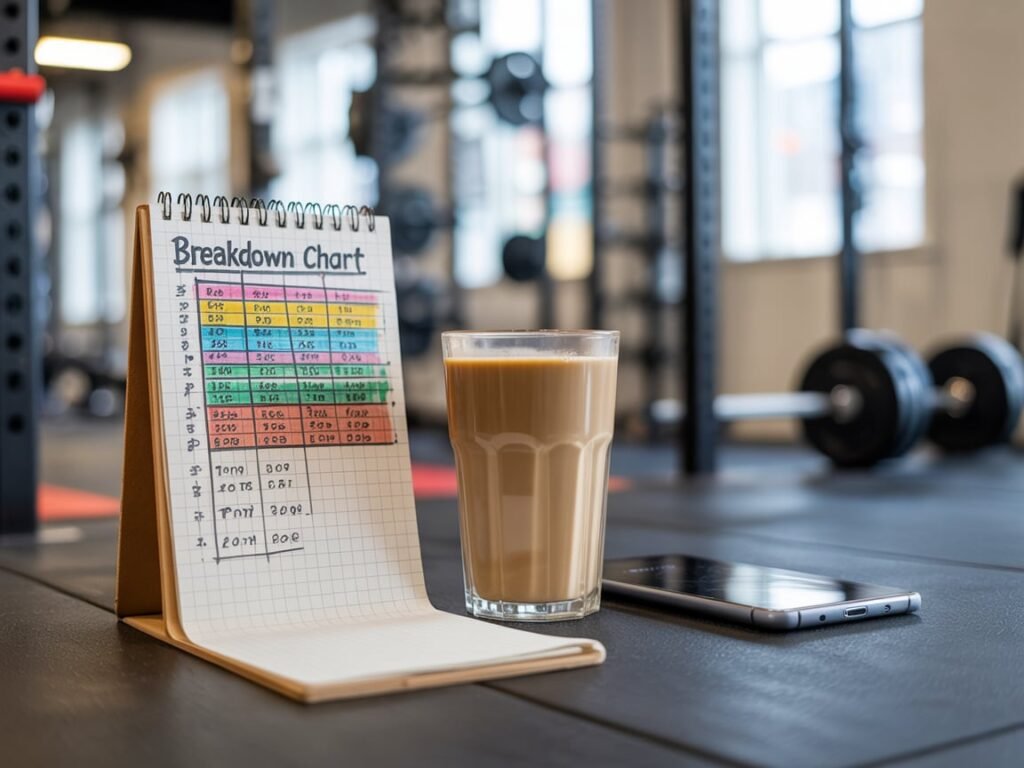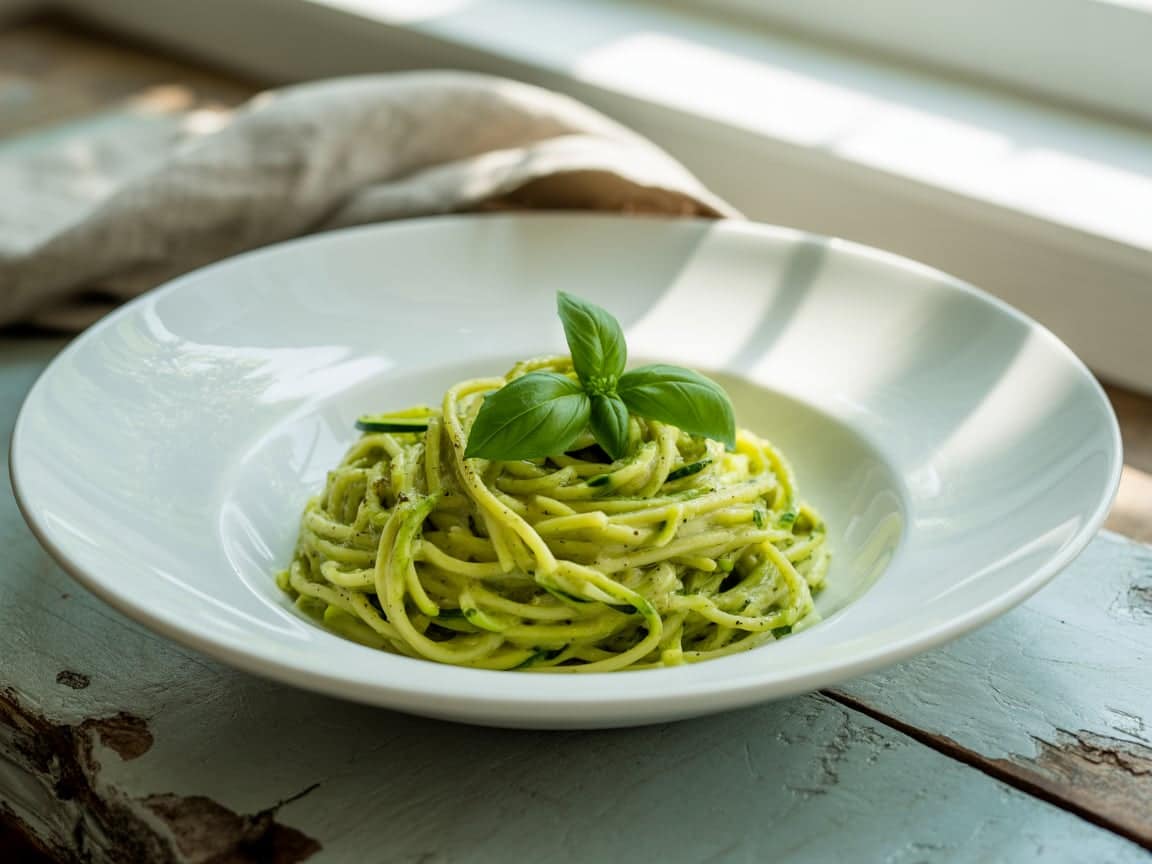Protein coffee recipe—a buzzworthy trend that blends the bold flavor of coffee with the powerful punch of protein. But at Cozy Bites Recipes, it’s more than just a morning pick-me-up. It’s about comfort, connection, and creating something that feels like home in every sip.
I’m Sarah, the heart behind CozyBitesRecipes.com, and this protein coffee recipe is one of those magical combinations I first started exploring during busy mornings with my kids. Between getting breakfast ready and preparing lunchboxes, I needed something quick, energizing, and wholesome. And that’s where this recipe found its place in my kitchen. Rooted in the warmth of my grandmother’s cooking and my love for simple yet nourishing meals, I knew I had to share this gem with you.
Whether you’re a gym-goer needing a post-workout refuel or a parent needing to power through the morning hustle, this guide covers everything—from ingredients and health benefits to easy variations and expert tips.
👉 Looking for inspiration? Try our banana peach smoothie recipe if you’re craving something fruity and protein-packed later in the day.
Table of Contents
What is a Protein Coffee Recipe and Why It’s Trending
Understanding Protein Coffee Recipe: A Blend of Nutrition and Energy
At its core, a protein coffee recipe combines your favorite coffee with a dose of protein—usually from a shake or powder. It’s designed to give you the caffeine boost you crave while also keeping your muscles fueled and hunger at bay.
What sets this drink apart is how effortlessly it balances energy and nutrition. Unlike sugary coffee shop beverages, a well-made protein coffee can be low in carbs, high in protein, and tailored to your dietary needs. Whether you use whey, plant-based, or pre-made bottled shakes, the concept remains the same: energize smarter.
How the Protein Coffee Recipe Trend Started: From TikTok to Fitness Gyms
The rise of “Proffee” (protein + coffee) on TikTok catapulted this concept into mainstream popularity. Fitness influencers and everyday users alike began sharing their spins on the protein coffee trend, emphasizing how versatile and satisfying it is.
But this isn’t just a fleeting social media craze. Nutritionists and personal trainers now recommend protein coffee as a convenient breakfast or post-workout drink. And home cooks like me are turning it into a comforting ritual—just like any cozy latte or homemade treat.
👉 Discover great ideas like this high-protein sushi bake recipe for a satisfying post-coffee meal that fits your protein goals.
Benefits of Drinking Protein Coffee Daily

Energy Boost with Lasting Satiety
One of the biggest perks of following a protein coffee recipe is the dual power of caffeine and protein. While caffeine delivers an immediate mental alertness, the protein component ensures you stay full for hours. This combination helps reduce unnecessary snacking and keeps your energy stable, especially during busy mornings or long commutes.
The science backs it too—adding protein to your breakfast can reduce ghrelin (your hunger hormone) and improve focus throughout the day. Coffee alone might wake you up, but coffee with protein helps you stay productive and satisfied.
✔️ Pro Tip: If you’re always on the go, pre-mix your cold brew and protein shake in the fridge the night before. All you have to do in the morning is pour it over ice and stir.
👉 Learn more about how high-protein drinks impact your routine by checking out our chia seeds smoothie, another powerhouse blend you can rotate into your breakfast.
Muscle Support and Weight Loss Companion
For fitness enthusiasts, a solid protein coffee recipe can do more than wake you up—it can fuel your gains. After resistance training or cardio, your muscles are primed for recovery. A protein-packed beverage within 30 minutes post-workout helps repair muscle fibers and kickstart growth.
Not into lifting weights? No problem. Even on rest days, maintaining a consistent protein intake can support metabolism and fat loss by promoting lean muscle mass.
Plus, when paired with a calorie-controlled diet, replacing your usual sugary latte with a homemade protein coffee can help cut back on sugar and processed fats—supporting your weight goals without sacrificing taste.
💡 Looking for a flavorful twist? Don’t miss our 2-ingredient coffee loophole recipe that’s simple, satisfying, and just as trendy.
Best Ingredients for a Perfect Protein Coffee Recipe
Choosing the Right Coffee Base: Cold Brew, Espresso, or French Press
The base of your protein coffee recipe sets the tone for both flavor and texture. And the good news? You’ve got plenty of options. Let’s break them down:
| Coffee Type | Flavor Profile | Best For |
|---|---|---|
| Cold Brew | Smooth, low-acid | Iced protein coffee blends |
| Espresso Shots | Bold, intense | Strong coffee lovers |
| French Press | Full-bodied, rich | Mellow, home-brewed versions |
| Drip Coffee | Classic and convenient | Quick hot or iced versions |
Using cold brew is the easiest when combining with pre-made protein shakes since it avoids clumping. But if you’re a fan of hot drinks, just let your espresso cool slightly before mixing to prevent curdling or damage to your shaker.
✔️ Don’t pour hot coffee directly onto ice in a glass. It can shatter from the temperature shock—use a heat-safe mug first.
👉 Discover more comforting drink ideas like our arizona watermelon fruit juice, perfect for midday hydration.
Types of Protein to Use: Shakes vs Powders and Their Pros and Cons
Your choice between protein shakes and powders depends on your goals, convenience, and dietary needs. Here’s a quick comparison to guide you:
| Protein Type | Pros | Cons |
|---|---|---|
| Bottled Protein Shake | Ready to drink, quick to mix | Higher cost, added sugars |
| Whey Protein Powder | High bioavailability, creamy texture | Needs shaker or blender |
| Plant-Based Powder | Vegan-friendly, allergen-safe | Sometimes gritty or chalky |
| Collagen Peptides | Skin/joint support, dissolves easily | Lower in complete proteins |
If you’re in a hurry, bottled shakes like vanilla or chocolate blend seamlessly into cold coffee. But if you’re customizing your macros or flavors, powders give you more flexibility. Just be sure to shake or blend thoroughly.
💡 Sarah’s Tip: I like using vanilla plant-based protein with cold brew and a dash of cinnamon—it’s like a cinnamon latte but packed with 15g of protein!
👉 Check out our ABC fruit juice for another nutrient-rich option that complements your morning lineup.
Print
Protein Coffee Recipe
Protein coffee recipe for energy and recovery. Learn how to make this creamy, high-protein drink at home in minutes.
- Total Time: 3 minutes
- Yield: 1 serving 1x
Ingredients
1 cup cold brew coffee
1 cup protein shake (vanilla, chocolate, or caramel)
½ cup ice
Instructions
Add ice to a glass.
Pour cold brew over ice.
Add protein shake and stir.
Notes
COFFEE VARIATIONS
It’s really up to you what type of coffee you use for your Proffee. I suggest using your favorite coffee you already have on hand.
Any of these will work:
Drip Coffee – Be careful when pouring hot coffee into a glass with ice as it could cause the glass to shatter.
Espresso One or two shots depending on your preferred caffeine intake
Cold Brew Coffee – Prepared store bought cold brew or homemade.
French Press Coffee
BOTTLED PROTEIN SHAKE OR PROTEIN POWDER?
The appeal to using a ready-to-drink bottled protein shake over protein powder is that it can easily be poured over your coffee, where protein powders need to be mixed in a blender bottle, shocked together, or blended.
If you are using protein powder combine coffee, ice, whey protein, and a bit of unflavored almond milk into a big shaker cup. If you don’t like (or can’t have almond milk) regular dairy milk, soy milk, or oat milk are all good substitutes.
The end result tastes almost the same no matter if you start with protein powder or a prepared liquid protein shake.
- Prep Time: 3 minutes
- Cook Time: 0 minutes
Nutrition
- Serving Size: 1 serving
- Calories: 102
- Fat: 2g
- Carbohydrates: 2g
- Protein: 15g
How to Make the Ultimate Protein Coffee Recipe at Home

Step-by-Step Instructions for the Perfect Proffee (Protein Coffee Recipe)
Creating a satisfying protein coffee recipe at home is as easy as combining your favorite cold brew with a protein shake. Whether you’re using a store-bought protein drink or a scoop of powder, the steps are simple, fast, and foolproof.
Ingredients:
- 1 cup cold brew coffee (or espresso/french press, cooled)
- 1 cup protein shake (vanilla, caramel, or chocolate flavored)
- ½ cup ice
Instructions:
- Add ice into a large glass.
- Pour cold brew over the ice.
- Add your protein shake (or powder + milk combo).
- Stir well until everything is fully combined. Enjoy!
✔️ Tip: If you’re using protein powder instead of a pre-made shake, mix it in a shaker bottle with a splash of almond or oat milk first. This avoids clumps and makes the texture smoother.
👉 Don’t miss our refreshing banana peach smoothie recipe if you want a fruity protein-packed option for later in the day.
Alternative Recipes for Vegans, Keto, and Dairy-Free Diets
No matter your lifestyle, there’s a protein coffee recipe variation for you. Here are a few swaps that cater to specific needs:
Vegan Protein Coffee:
- Use plant-based protein (pea or soy) and oat milk.
- Sweeten with agave or maple syrup if needed.
Keto-Friendly Proffee:
- Stick with unsweetened cold brew.
- Add low-carb protein powders (like whey isolate or collagen peptides).
- Blend with unsweetened almond or coconut milk.
Dairy-Free Version:
- Swap dairy protein shakes with almond, soy, or oat-based ones.
- Choose cold brew coffee to maintain smoothness and avoid curdling.
💡 Flavor Tip: Add a splash of vanilla extract or cinnamon for a cozy upgrade without added calories.
👉 Check out our lesser-known but delicious high-protein dense bean salad as a savory complement to your morning proffee.
Tips to Customize Your Protein Coffee Recipe Like a Barista
Flavor Add-Ins: Vanilla, Cinnamon, Cocoa & More
The beauty of any protein coffee recipe lies in its flexibility. Once you’ve mastered the basic version, get creative with flavors and textures. Here are some popular—and delicious—add-ins to upgrade your morning brew:
| Add-In | Flavor Profile | How to Use |
|---|---|---|
| Vanilla Extract | Sweet, smooth | ¼ tsp stirred in or blended |
| Ground Cinnamon | Warm, spicy aroma | Sprinkle on top or mix into shake |
| Cocoa Powder | Rich, chocolatey | Mix 1 tsp with protein powder |
| Nut Butter (almond) | Creamy, nutty depth | Blend 1 tbsp for extra creaminess |
| Pumpkin Spice | Cozy and seasonal | Add a dash for a fall-inspired flavor |
These add-ins pair especially well with vanilla or caramel protein shakes and cold brew. Just remember, less is more—start small and adjust to taste.
✔️ Tip: Stirring in a little sugar-free hazelnut syrup gives your proffee café-style flair—without the sugar crash.
👉 Discover more customizable drinks like our ice water hack recipe, perfect for hydration between meals.
Sweeteners, Creamers, and Texture Enhancers
Not all protein shakes are sweet enough on their own. Here are some ways to adjust sweetness and creaminess without sacrificing nutrition:
Healthier Sweetener Options:
- Stevia or monk fruit drops
- Sugar-free syrups (vanilla, mocha, hazelnut)
- A dash of honey or agave (if not low-carb)
Dairy-Free Creamers:
- Unsweetened almond milk
- Coconut milk creamer
- Oat milk for a creamy, nut-free option
Texture Boosters:
- Ice for a thicker, colder blend
- Collagen peptides for added smoothness
- Frozen banana (for smoothies with coffee)
If your coffee feels too thin, blending it with frozen ingredients or adding a spoonful of nut butter makes it richer—perfect for sipping on busy mornings.
💡 Want an even smoother experience? Use a handheld milk frother to blend everything together right in your glass.
👉 Don’t miss our red pepper coulis recipe to complement your protein-packed breakfast with bold flavor.
Nutrition Facts and Health Considerations of Protein Coffee Recipe

Macro Breakdown: Calories, Protein, Carbs & Fats
When made right, a protein coffee recipe delivers excellent nutrition without weighing you down. Here’s an example of the macros for a standard homemade version using cold brew and a vanilla protein shake:
| Nutrient | Amount per Serving |
|---|---|
| Calories | 102 kcal |
| Protein | 15g |
| Carbohydrates | 2g |
| Fat | 2g |
| Sugar | 7g |
| Cholesterol | 180mg |
| Calcium | 361mg |
| Sodium | 173mg |
| Potassium | 440mg |
As you can see, it’s a low-calorie, high-protein option ideal for weight management, muscle maintenance, and energy support. Plus, it’s much healthier than sugar-laden specialty coffees or energy drinks.
✔️ If you’re tracking macros for fitness, proffee fits beautifully into most meal plans—especially when consumed pre- or post-workout.
👉 Check out our honey ginger dressing to balance your high-protein meal plan with anti-inflammatory ingredients.
Is Protein Coffee Recipe Actually Healthy? Myths and Facts
Let’s bust some common myths and get to the facts about the healthiness of protein coffee:
❌ Myth 1: Mixing protein and caffeine is harmful
✅ Fact: There’s no scientific evidence that combining protein and coffee negatively impacts absorption or digestion. As long as you’re not sensitive to caffeine, it’s perfectly safe.
❌ Myth 2: Protein coffee is just a trend
✅ Fact: It’s functional nutrition. Fitness experts and dietitians recommend it for busy mornings, recovery, and calorie-smart snacking.
❌ Myth 3: All protein coffees are created equal
✅ Fact: Not true. The nutritional quality depends on the ingredients you use. Bottled shakes with added sugars can reduce the health value. Go for clean protein powders or low-sugar pre-made shakes.
💡 Pro Tip: Always check the label on your protein shake or powder. Look for clean ingredients and avoid artificial fillers if you want your coffee to be as healthy as possible.
👉 Don’t miss our smoothies with Medjool dates—a naturally sweet option for protein-rich energy without processed sugars.
Best Time to Drink Protein Coffee for Maximum Results
Morning Kickstart vs Post-Workout Refuel
Timing is everything when it comes to getting the most out of your protein coffee recipe. Depending on your routine and goals, here’s how you can tailor it:
Morning Kickstart
Drinking protein coffee first thing in the morning helps replace traditional breakfasts with a more balanced, high-protein option. It’s perfect if:
- You’re in a rush and need a grab-and-go meal
- You want to stay full until lunch
- You’re trying to avoid sugary breakfast cereals or pastries
Caffeine in coffee will jump-start your brain, while the protein slows digestion and keeps blood sugar stable. It’s a win-win for both productivity and health.
Post-Workout Refuel
Had a tough session at the gym? A protein coffee recipe within 30 minutes post-exercise supports:
- Muscle recovery and repair
- Reduced post-exercise soreness
- Improved protein synthesis for muscle building
Just ensure your coffee base isn’t too acidic or hot—this can reduce palatability after intense workouts. Cold brew is usually the go-to option here.
✔️ Pro Tip: Add a banana or a scoop of collagen powder to your post-workout proffee for added recovery benefits.
👉 Learn more about nutrient-dense refueling with our steak chimichurri dense bean salad recipe, a perfect high-protein companion meal.
How Often Should You Drink It? Expert Recommendations
So how often should you enjoy this powerful combo? The answer depends on your lifestyle and diet, but here’s a helpful guideline:
| Goal | Frequency Suggestion |
|---|---|
| Weight loss | 1 serving in the morning |
| Muscle gain | 1–2 servings (AM + post-workout) |
| Busy lifestyle energy boost | As needed, max 1/day |
| Intermittent fasting | Break fast with proffee |
Too much caffeine can lead to jitters or dehydration, so moderation is key. Keep total daily caffeine intake under 400mg—especially if you’re combining coffee with pre-workout or energy drinks.
💡 Sarah’s Tip: I limit myself to one proffee per day, usually mid-morning after a light walk. It gives me a great mental reset and carries me through the day!
Common Mistakes When Making Protein Coffee Recipe
Mixing Protein Powder with Hot Coffee the Wrong Way
One of the biggest errors people make with a protein coffee recipe is trying to stir protein powder directly into piping hot coffee. This usually ends in:
- Clumping
- Chalky texture
- Curled or separated protein
Here’s how to avoid it:
- Let your coffee cool for at least 5–10 minutes before adding protein powder.
- Use a blender bottle or frother to properly dissolve the powder.
- Add a splash of cold milk before mixing into coffee to stabilize the temperature.
✔️ Best Practice: If you’re in a rush, pre-blend your protein with almond milk or water, then pour it into your coffee for a silky smooth texture.
👉 Don’t miss our brussel sprouts and ham quiche for a protein-packed breakfast that pairs well with your proffee.
Flavor Imbalances and Texture Mistakes to Avoid
Another common issue? Overpowering or bland flavor profiles. Protein coffee should be smooth, rich, and enjoyable—not a gulp-and-go chore.
Here’s how to strike the right balance:
- Avoid overly sweet protein powders that clash with coffee’s natural bitterness.
- Skip flavored creamers if your shake is already flavored.
- Use unsweetened coffee bases so you can better control sweetness.
For texture:
- Don’t skip the ice or milk if you want it cold and frothy.
- Don’t use a spoon to stir powders—shaker bottles or mini blenders work better.
💡 Pro Tip: Adding a pinch of salt can balance sweetness and bitterness, enhancing flavor without extra calories.
👉 Looking for flavor-rich beverage alternatives? Check out our zobo drink recipe for a refreshing, immune-boosting sipper.
Frequently Asked Questions About Protein Coffee Recipe
Can you mix protein with coffee?
Yes, you absolutely can mix protein with coffee—and it’s actually a growing trend known as “proffee.” Just be sure to avoid pouring hot coffee directly onto protein powder. For best results:
Let the coffee cool slightly
Use a shaker bottle, blender, or frother
Mix your protein first with a bit of milk or water to prevent clumping
Many people now use this mix as a healthier breakfast or post-workout shake with a caffeine boost.
What is the best protein to mix in coffee?
The best protein for a protein coffee recipe depends on your taste, dietary preferences, and goals. Here are a few top options:
Whey Protein Isolate: Easily dissolves, great post-workout
Collagen Peptides: Dissolves in hot or cold coffee, supports joints & skin
Plant-Based Protein (Pea, Soy): Perfect for vegans, especially with cold brew
Ready-to-Drink Shakes: Great for convenience; just pour and stir
Is protein coffee actually healthy?
Yes—when made properly, a protein coffee recipe can be an incredibly healthy addition to your day. It’s a:
High-protein, low-carb option
Great alternative to sugary coffeehouse drinks
Satisfying breakfast or snack that fuels your energy and reduces cravings
Avoid highly processed protein shakes or those with added sugars. Stick to clean ingredients and limit yourself to one proffee a day to stay within safe caffeine limits.
How much protein powder to put in a cup of coffee?
The ideal amount is 1 full scoop of protein powder (typically 20–25g of protein), depending on your dietary needs. If you’re using a bottled protein shake, aim for around 8–12 oz, which usually contains 15–20g of protein.
✔️ Tip: Always read the label—some powders are more concentrated than others. When in doubt, start with half a scoop and adjust based on taste and texture.
👉 Learn more about nutritious drinks with our natural Zepbound recipe, which complements a balanced diet.
Conclusion: Protein Coffee Recipe
A protein coffee recipe is more than a social media trend—it’s a practical, energizing, and nourishing drink that fits into just about any lifestyle. Whether you’re a busy parent trying to simplify breakfast, a fitness enthusiast looking for smart recovery options, or just someone who loves their morning coffee with a boost, proffee delivers flavor and fuel in one easy glass.
At Cozy Bites Recipes, we believe in making comfort food simple—and your coffee should be no exception. With the right coffee base, the perfect protein, and a few custom touches, you can turn your daily brew into a satisfying ritual that energizes your body and brings joy to your routine.
👉 Don’t miss our easy homemade sugar scrub—a relaxing addition to your morning routine alongside your protein coffee.




